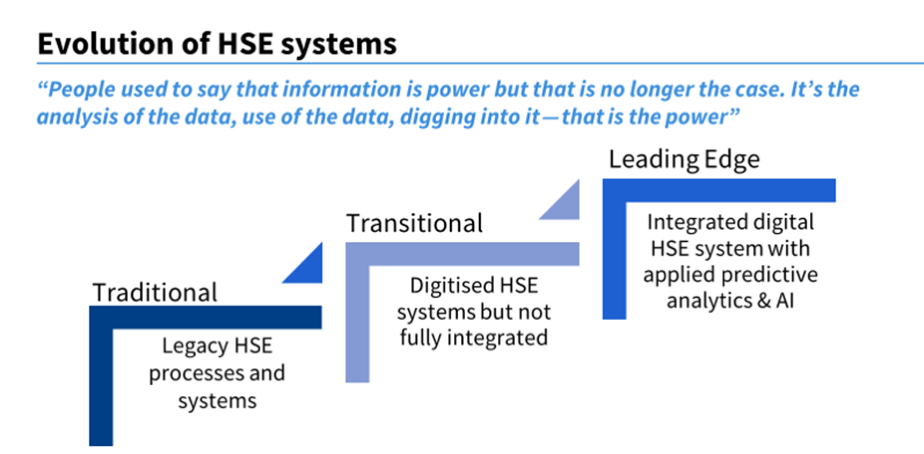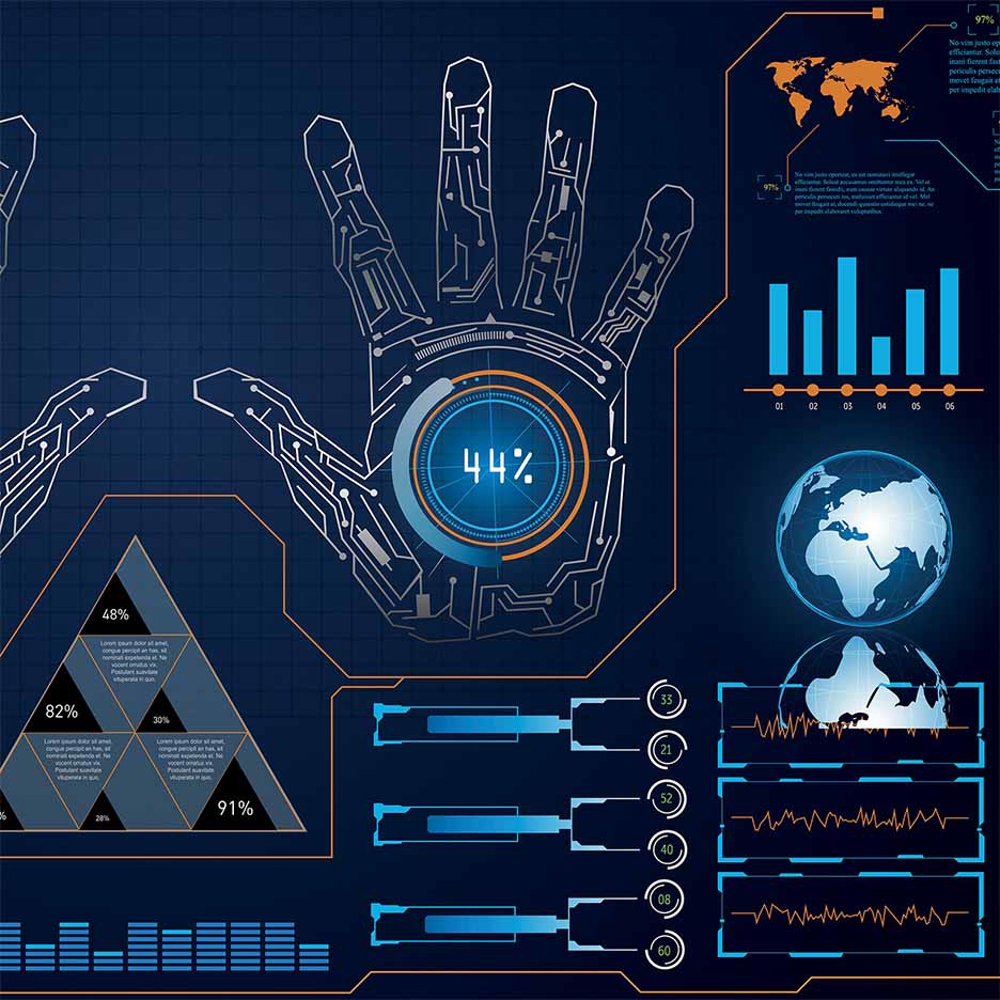How analytics and data science are transforming decision-making in HSE.
Almost all organisations collect Health, Safety and Environment (HSE) data, such as the number of incidents, type and frequency of accidents, injuries and ill-health. However, not many, go beyond this to fully realise the potential of the information at their disposal. This is because it is often stored in different systems and exists in 'silos', and is thus not integrated for meaningful application for HSE insights or analytics.
Traditional HSE systems focuses on lagging indicators, notably the types and numbers of accidents. Used correctly, this highlights where to make interventions to address specific hazards, such as changing equipment, conducting training or revising the working methods. Often, the link between these interventions and the impact on outcomes is however rather weak. For example, when we see the number of injuries declining over a period and assume it is because of recently-introduced programme or changes. As well as being reactive, using lagging indicators to highlight areas for improvement is also a very top-down approach.
Integrating diverse data
While an increasing number of companies are capturing more and more HSE data each year, most companies don't use it and much of the decision-making in HSE remains intuitive.
Data analytics can bring greater scientific rigour and introduce more evidence-based decisions. This could be key when considering different types of intervention or when promoting a strategy that involves considerable change or investment.
There is huge potential to link the different types of HSE data captured to make more informed decisions. Currently, most organisations have a wide range of 'data sets', including training and competency records, employee demographical information, health data, and task and project information, alongside audit, inspection, observation and near miss reports. Some of these data sets measure impact safety interventions, while others provide an indication of individual outputs. The truly advanced give us an indication of likely outcomes, such as whether employees are healthier and safer at work. These data sets are rarely integrated and we often implement HSE strategies and improvement actions in isolation.
These data sets are rarely integrated and we often implement HSE strategies and improvement actions in isolation.
Introducing Artificial Intelligence
Most progressive safety cultures aim for high levels of employee engagement, either through safety observations, ideas or near miss reports. If successful, this can create huge numbers of reports, all of which need to be reviewed and analysed. This is time-consuming and a common failure in safety reporting programmes is the inability to handle the volume of reports that employees create. The volume of data collected also raises potential liabilities if safety concerns remain 'hidden' and go unresolved.
The introduction of artificial intelligence (AI) into incident reporting systems has the potential to simplify the reporting process and automate the analysis, enabling practitioners to utilise their time more effectively.
Technology also gives us the ability to monitor real-time data along with application of AI into HSE. For example, many organisations now deploy telematics that track their driver behaviour; other organisations are utilising wearable technology to monitor and record personal exposure to noise, vibration, heat, etc. These technologies create a vast rich new set of information, which can be integrated into other potential data sources. Integrating driving hours and scheduling, with the open source data on traffic and weather, could be transformative for managing driver fatigue and preventing micro-sleeps. Add in the outputs from wearables that monitor driver fatigue and you have a vast arsenal of potential information at your disposal to keep people safe. You can apply similar examples to other high-risk activities such as working outside in the heat or at height.
Technology also gives us the ability to monitor real-time data along with application of AI into HSE.

Learning from other sectors
The application of technology gives us an opportunity to actively engage employees with the safety culture, capture rich data using sensors and wearables, integrate HSE data at an organisational level and apply advanced data science - modelling and predictive analytics to draw rich insights, anticipate risks and shape a truly intelligent, leading-edge HSE system.
These practices have been successfully applied in the marketing, financial, and insurance sectors and it's time we evolve traditional or transitional HSE systems to create value for the organisation as well as ensuring employee safety.
There are also contextual reasons why this technology is now being applied to HSE. The costs of safety failures are now significant for organisations in financial, operational and reputational terms, and this makes it easier to justify the investment required. It is also worth noting that most organisations have tried all the traditional HSE interventions and are looking for more evidence-based interventions.
This is a hugely exciting area for us at LR, and our work is rapidly evolving in the area of data science and AI - this could be a game changer for how we collect, analyse, and understand HSE data.
The application of data science in HSE truly has the potential to transform how we think and work as HSE professionals. Leading-edge HSE systems will enable us to shape our strategy and create value for our customers in ways that we were previously unable to do. We're entering some very interesting and exciting times in HSE!
The costs of safety failures are now significant for organisations in financial, operational and reputational terms.






